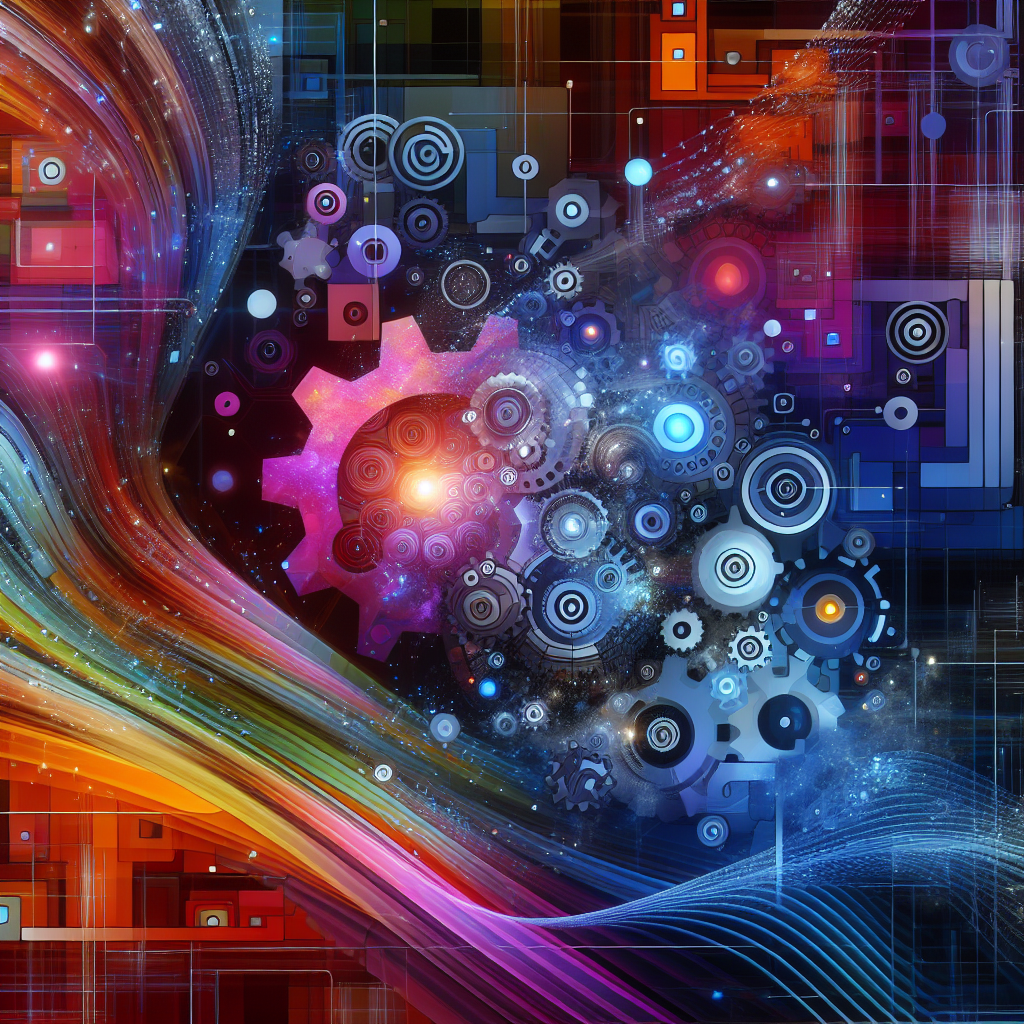Artificial Intelligence (AI) and creative coding have been pushing the boundaries of programming in recent years, creating new and innovative ways for machines to interact with and create artistic content. This merging of technology and creativity has led to a new era of possibilities in the world of art and design.
Creative coding involves using computer programming to generate visual or auditory works of art, often in real-time. This can include everything from interactive installations and data visualizations to generative art and digital animations. AI, on the other hand, refers to the simulation of human intelligence processes by machines, typically through the use of algorithms and data.
When these two fields come together, the result is a powerful combination that can create art in ways that were previously unimaginable. AI can be used to analyze and interpret data, make decisions, and even generate new ideas, all of which can be applied to the creative process. This has led to the development of AI-powered tools and platforms that can assist artists in their work, as well as new forms of art that rely on AI algorithms to create unique and dynamic compositions.
One of the most exciting applications of AI in creative coding is the use of machine learning algorithms to generate art. These algorithms can be trained on vast amounts of data, such as images, music, or text, and then used to create new works based on this information. For example, a neural network can be trained on a dataset of paintings by famous artists, and then used to generate new paintings in a similar style.
Another area where AI is making a big impact is in the field of interactive art and installations. By using computer vision and machine learning algorithms, artists can create immersive experiences that respond to the movements and gestures of the audience. This can range from interactive projections that change based on the viewer’s actions to virtual reality experiences that adapt in real-time to the user’s input.
AI is also being used to automate certain aspects of the creative process, such as generating music or designing graphics. For example, AI-powered music composition tools can analyze a piece of music and generate new melodies or harmonies that complement the original piece. Similarly, AI can be used to create visual effects or animations based on a set of parameters or input data.
While AI and creative coding have opened up a world of possibilities for artists and designers, there are also challenges and ethical considerations that come with using these technologies. For example, there are concerns about the potential for bias in AI algorithms, as well as the implications of using machines to create art instead of human artists. Additionally, there are questions about the ownership and copyright of AI-generated works, as well as the role of the artist in the creative process.
Despite these challenges, the combination of AI and creative coding offers a wealth of opportunities for artists and designers to explore new forms of expression and push the boundaries of programming. By leveraging the power of AI algorithms and machine learning, creatives can create art that is dynamic, interactive, and truly unique.
FAQs:
Q: Can AI really be creative?
A: While AI can generate new ideas and create art, its creativity is often based on patterns and information that it has been trained on. Some argue that true creativity requires human intuition and emotion, which machines lack. However, AI can still be a valuable tool for artists and designers to explore new possibilities and enhance their creative process.
Q: How can artists and designers learn to use AI in their work?
A: There are many resources available for artists and designers who want to learn how to use AI in their creative practice. Online courses, workshops, and tutorials can help individuals get started with AI tools and platforms, while communities and forums can provide support and feedback on projects.
Q: What are some examples of AI-powered art projects?
A: There are many examples of AI-powered art projects that showcase the potential of combining AI and creative coding. For example, the “DeepDream” project by Google uses neural networks to generate dream-like images, while the “AICAN” project by Rutgers University creates abstract paintings using AI algorithms.
Q: What are the ethical considerations of using AI in art?
A: There are several ethical considerations to keep in mind when using AI in art, including issues of bias, ownership, and the role of the artist. Artists and designers should be aware of these considerations and strive to create work that is ethical and respectful of all stakeholders involved.
In conclusion, AI and creative coding are pushing the boundaries of programming and creating new opportunities for artists and designers to explore. By leveraging the power of AI algorithms and machine learning, creatives can create art that is dynamic, interactive, and truly unique. While there are challenges and ethical considerations to consider, the potential of AI in creative coding is vast and exciting, offering endless possibilities for innovation and creativity.

